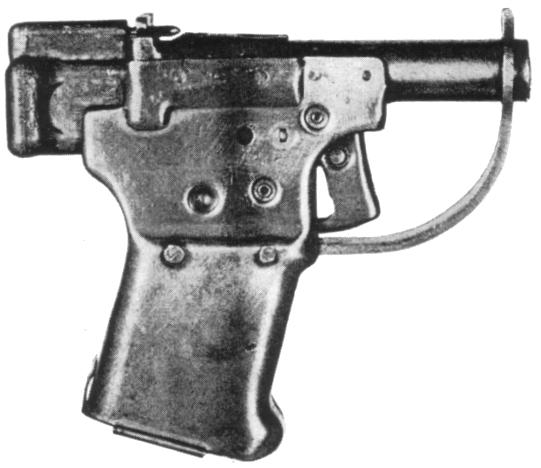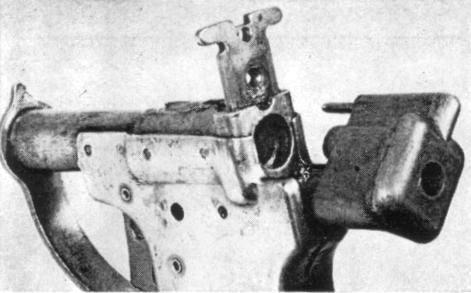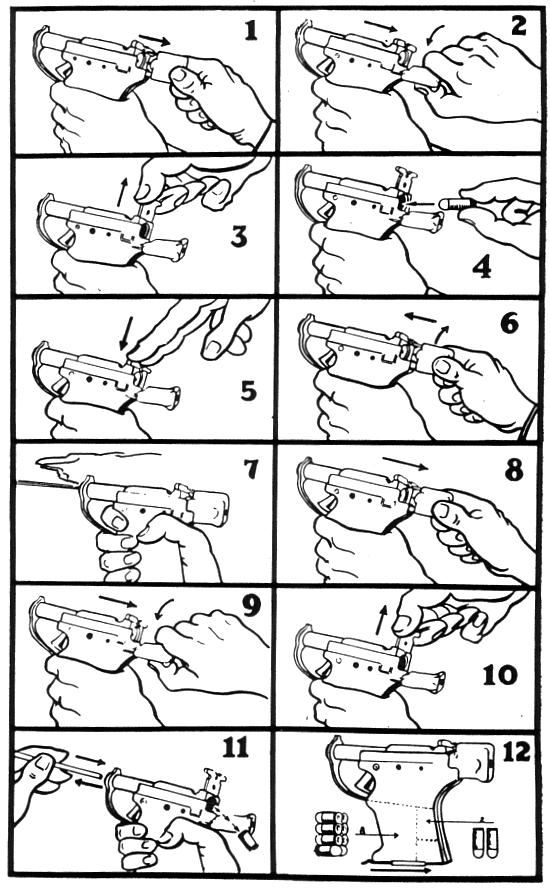
Large trigger guard permitted firing with gloved hand.
It extends above muzzle to form front sight.
Liberator Gun
By M. D. Waite
American Rifleman, June 1954
The arming of partisan or other resistance forces within Nazi-occupied territories became a major problem to the Allies during World War II, especially since the production of such armament was carried out in addition to that for normal troop requirements.
U. S. Army Ordnance, through its vigorous research and development program, made many significant contributions towards this little publicized effort, not the least of which was development and production of the rather unique "Liberator" pistol.

Large trigger guard permitted firing with gloved hand.
It extends above muzzle to form front sight.
The demand for this gun originated with the Office of Strategic Services (OSS), as that organization was vitally interested in arming resistance forces in Europe. OSS specifications called for a cheap but effective gun weighing one pound, and they wanted a million of them in a hurry!
The basic design for an effective .45 caliber singleshot pistol was soon formulated by Army Ordnance and the contract was let to the Guide Lamp Corporation, who completed tooling and production of the million guns in the record time of thirteen weeks. Final deliveries were made during the month of August, 1942.
The ultimate cost of each unit was a little over $2.00 and the guns were constructed entirely of non-strategic materials. Each gun was individually packaged in a sturdy, paraffin-coated, cardboard box. Included were an instruction sheet, a wooden ramrod, and ten rounds of .45 ACP ammunition stored in the butt of the gun.
With the exception of the 4-inch smoothbore, seamless steel tubing barrel and die-cast percussion mechanism, the gun is constructed throughout of sheet steel stampings and a few small steel pins and coil springs. The various parts are held together by a combination of folded seams, rivets, spot and acetylene welds.

Absence of ejector and extractor permitted simple breech construction.
Note fixed firing pin in percussion mechanism and rear sight notch in loading gate.
The net result is a very crude-looking weapon, but it was nevertheless a significant contribution towards the Allied war effort, based upon the theory that "some gun is better than none at all."
A study of the instruction sheet reveals that this is a very simple weapon to operate even though it lacks both an extractor and ejector.

For more photos and information, click here.